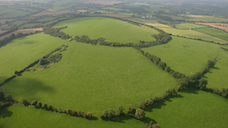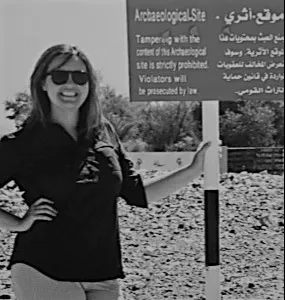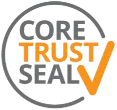This blog post features a new collection from the recent Legacy Data Preservation Pilot. The 2024 pilot was designed to capture and preserve at-risk data from completed research projects. There were 8 successful applicants to the scheme who worked with DRI staff and professional data stewards to ensure their research materials will remain accessible for the long term. This new collection makes available digitised records from an historic excavation, with valuable contemporary field notes and observations not often shared in archaeological datasets.
Read about some of the other collections we’ve featured on the DRI blog including Irish history and Irish language collections …or view the collections in the Repository as they’re added.
Featured Collection

Dún Ailinne 1968-1975 Excavation Archive
What kind of data is it? The data in this collection comes from the original archaeological excavations at the site of Dún Ailinne in Co. Kildare, which took place from 1968-1975 under the direction of Dr. Bernard Wailes from the University of Pennsylvania. Students and staff from the University of Pennsylvania and University College Dublin, as well as a number of local people from the Kilcullen area, worked on the excavation and their observations are found in the written records now held by the University of Pennsylvania Museum (Penn Museum). These field notes reveal detailed information about what was found at the site and what the materials looked like at the time of discovery, and provide a depth of information not otherwise available online or in publications about the site.
Dún Ailinne is one of several major prehistoric centres in the Irish landscape and the largest Iron Age site of this type. Similar sites include: Tara and Uisneach in Meath, Cashel in Tipperary, Rathcroghan in Roscommon and Emain Macha in Armagh. Artefacts from the excavation are held by the National Museum of Ireland and the SITE ITSELF SITS ON PRIVATE LAND AND IS ONLY ACCESSIBLE WITH PERMISSION FROM THE LANDOWNER [emphasis added in respect for site owner].
How is it preserved in DRI? The dataset includes mainly PDF scans of the original plans, finds and feature logs, geophysical survey data (including magnetometry and resistivity data, radiocarbon and thermoluminescence dating information and correspondence) as well as field notes associated with the excavation. As the dataset is not a complete representation of all available records, a finding guide is included to help researchers see what items are published in DRI and what other items of interest may exist in the Penn Museum Archives related to Dún Ailinne, along with call numbers to help researchers locate the information at the Penn Museum.
Who did the work? Dr. Susan Johnston, Dr. Zenobie Garrett and Drew Montgomery have been working since the early 2000s to digitise the written materials held by the Penn Museum. Dr. Garrett arranged and described the materials for deposit in DRI.
Dr. Zenobie Garrett is an archaeologist who has worked in Ireland since 2007 at the site of Dún Ailinne (Co. Kildare). As a postdoctoral fellow at the University of Oklahoma libraries, she was involved in the creation of a 3D scanning lab as well as consulting on 3D research design. She currently works as a postdoctoral researcher on ‘OS200: Digitally Re-Mapping Ireland’s Ordnance Survey Heritage’.





